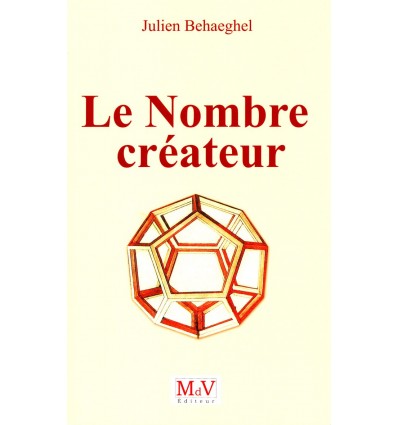Humanism • Spirituality • Well-being
-
0
Product
Products
No products
To be determined
Shipping
0,00 €
Total
Prices are tax included
Product successfully added to your shopping cart
Quantity
Total
There are 0 items in your cart. There is 1 item in your cart.
Total products
(tax incl.)
Total shipping (tax incl.)
To be determined
Le Nombre créateur
Julien Behaeghel immerses us into symbolism through the study of numbers.
2 Items
In stock Delivery 2 to 4 days
Description
Jung’s work aimed to provide the field of experimentation with a means of accessing the realm of the soul. In the first part of this book, Jung explains just how much we depend on our unconscious. Consciousness, that most cherished of man’s conquests, is “surrounded by the abyss of the unconscious, as if by a threatening sea”, but meditation on our dreams offers us the possibility of establishing a dialogue with our unconscious. The second part familiarises us with the functions and structures of consciousness and the unconscious. Consciousness makes use of certain functions to ensure orientation in external space: sensation, thought, intuition and feeling. Orientation in external space brings us into contact with shadow, which is the dark and repressed part of the self, recollection, memory, affects... Introversion and extroversion distinguish two primary categories of individual, depending on whether they tend to orientate themselves towards the inner or outer world.The third part is dedicated to dreams and presents a number of examples immersing us in this mysterious world which becomes clearer as we explore interpretations.
Characteristics
| Author | JULIEN BEHAEGHEL | |
| Editor | MAISON DE VIE | |
| Number of pages | 162 | |
| Type of book | Broché | |
| Language | French | |
| Dimensions | 14 x 22,5 |
Numbers
-
Books
- Western traditions
-
Western mystical authors
- Bacon Francis
- Boehme Jacob
- Bruno Giordano
- Davy Marie-Madeleine
- Desjardins Arnaud
- Dürckheim Karlfried Graf
- Eckartshausen Karl von
- Lévi Eliphas
- Maier Michael
- Maître Philippe
- Mystiques chrétiens
- Papus
- Paracelse
- Pic de la Mirandole Jean
- Saint-Yves d'Alveydre Alexandre
- Schwaller de Lubicz René Adolphe et Isha
- Sédir
- Souzenelle Annick de
- Steiner Rudolf
- Swedenborg Emmanuel
- Teilhard de Chardin, Pierre
- Vinci Léonard de
- Oriental traditions
- Oriental mystical authors
- Other traditions
- Religions
- Symbolism - Wisdom- Spiritual practices
- Philosophy- Utopias
- Prayer - Meditation- Visualisation
- Science and spirituality
- Gift books
- Arts divers (Peinture - Sculpture - Architecture - Danse ...)
- Music
- Novels - Tales - Poems
- Biographies
- Audiobooks
- Health
- Psychology
- Inner fulfilment
- Children' s books
- Death - NDE - Palliative care (support to the terminally-ill)
- Reincarnation - Karma
- Ecology - Nature
- Feng Shui - Geobiology
- Tarots - Pendulums
- Foreign mystical literature
- Coffee-table books
- Rosicrucian books
- Martinist books
- Incense
- Ritual objects
- Music
- Health and well-being
-
Gift Ideas
- Traditional objects
- L'esprit de la Chevalerie &
- Nature
- Terrestrial, celestial, and planetary globes
- Le plaisir d'écrire
- Postcards - Stationery
- Candles - Candle holders - Candle snuffers
- Parfums d'intérieur
- Jewellery
- Home and garden decoration
- Children
- Divinatory arts
-
Noël 2025
- Hildegarde de Bingen
- Lumières du Moyen Âge
- L'esprit de la Chevalerie
- La quête de la Lumière
- Beaux-Livres
- Le plaisir de lire
- La méditation
- Le jardin secret
- Les murmures de la nature
- La langue des oiseaux
- Beauté de l'univers
- L'âme de la rose
- Encens rosicrucien
- Encens divers
- Rêves d'Orient
- L'Égypte, terre de Tradition
- Le monde des senteurs
- Bijoux
- L'enfance
- Noël
- Cartes de fin d'année
- Rosicrucian and Martinist items
from 95€
change your mind
payment













Follow us